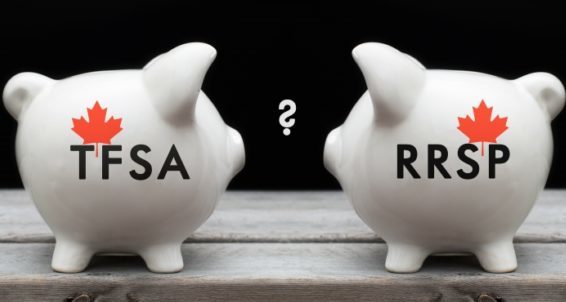Saving For Your First Home
Posted on September 22nd, 2022 in Financial Planning & Wealth Management
Saving for a first home can be a significant challenge for many, especially when the price of the average home in Canada is nearly $630,000. The minimum down payment to qualify for a mortgage is 5% of the purchase price if the purchase price is $500,000 or less and 10% for any amount over $500,000. That means if you purchased an average home in Canada, you would need a down-payment of at least $38,000, however if you were making a down-payment of less than 20% of the purchase price, you would have to pay an insurance payment of $23,680 to the Canadian Housing & Mortgage Corporation. This insurance protects the lending institution in the event that you default on your mortgage in the future.
There are several programs outlined below which are designed to assist first-time homebuyers with saving for their new homes. In addition to the savings programs listed below, there are many tax incentives available for first-time homebuyers. These tax incentives are beyond the scope of this article and should be discussed with your trusted Accountant for more information.
RRSP First-Time Home Buyer Plan (HBP)
- Maximum $35K tax-free withdrawal from RRSP ($70k/couple)
- Repayment over 15 years
- The repayment period starts the second year after the year when you first withdrew funds from your RRSP(s) for the HBP. For example, if you withdrew funds in 2022, your first year of repayment will be 2024
- Each year, the Canada Revenue Agency (CRA) will send you a Home Buyers’ Plan (HBP) statement of account, with your notice of assessment or notice of reassessment
- The statement will include:
- The amount you have repaid so far (including any additional payments and amounts you included on your income tax and benefit return because they were not repaid)
- Your remaining HBP balance
- The amount you have to contribute to your RRSP(s), PRPP or SPP and designate as a repayment for the following year
- If you repay less than the required amount owing for the year, any remaining balance owing will be added to your income and taxed as RRSP income
- Any amounts repaid in excess of the minimum, reduce future annual minimum repayments
- Contributions to RRSP are tax-deductible and based on your annual maximum contribution room shown on your Notice of Assessment
- Contributions made in the 89 days prior to the RRSP home buyers withdrawal are subject to deduction limitations
- Cannot be used in conjunction with the First Home Savings Account (FHSA)
Tax-Free Savings Account (TFSA)
- Started in 2009 and is available for anyone 18 or older
- The annual TFSA contribution limits for the years:
- 2009 to 2012 was $5,000
- 2013 and 2014 were $5,500
- 2015 was $10,000
- 2016 to 2018 was $5,500
- 2019 to 2022 is $6,000
- The unused contribution room is carried forward and can be used in any future year
- Contributions are not tax-deductible
- No tax on the growth
- Withdrawals are tax-free
- No repayment required
- Any amount withdrawn is added back to your contribution room in the following year
The First-Time Home Buyer Incentive
The First-Time Home Buyer Incentive is a shared-equity mortgage with the Government of Canada, which offers:
- 5% or 10% for a first-time buyer’s purchase of a newly constructed home
- 5% for a first-time buyer’s purchase of a resale (existing) home
- 5% for a first-time buyer’s purchase of a new or resale mobile/manufactured home
- The shared equity component of the incentive means that the government shares in both the upside and downside of the property value, up to a maximum gain or loss equal to 8% per annum (not compounded) on the Incentive amount from the date of advance to the time of repayment
- The homebuyer will have to repay the Incentive based on the market value of the home at the time of repayment equal to the percentage (for example, 5% or 10%) of the original home value used to determine the Incentive, up to a maximum repayment amount equal to:
- where the home’s value has appreciated, the Incentive plus a maximum gain of 8% per annum (not compounded) on the Incentive amount from the date of advance to the time of repayment; or
- where the home’s value has depreciated, the Incentive minus a maximum loss of 8% per annum (not compounded) on the Incentive amount from the date of advance to the time of repayment
- The homebuyer must repay the Incentive after 25 years, or when the property is sold, whichever comes first. The homebuyer can also repay the Incentive in full any time before, without a pre-payment penalty.
Tax-Free First Home Savings Account (FHSA) – Coming in 2023
- Maximum annual tax-deductible contributions $8K
- Maximum lifetime contributions $40K
- Tax-Free withdrawal for qualified first-time home buyer, which is considered to be a person who has not owned a home in which they lived during the current calendar year or the previous four calendar years; an exception to this is made for anyone making a withdrawal within 30 days of moving into their first-time home
- Once the account is open it must be used to purchase a home within 15 years or before the end of the year that the individual turns age 71. If not used to purchase a qualifying first-time home during these periods, it can no longer be used for this purpose and must be either transferred tax-free to a Registered Retirement Savings Plan or Registered Retirement Income Fund or withdrawn and fully taxed as income
- After an FHSA is open any unused contribution limit can be carried forward and used in any subsequent year
- Contributions can be deducted against income in the year they are made or carried forward and deducted in any future year
- Cannot be used in conjunction with the Home-Buyers Plan
Information in this article has been referenced from the Government of Canada website.

